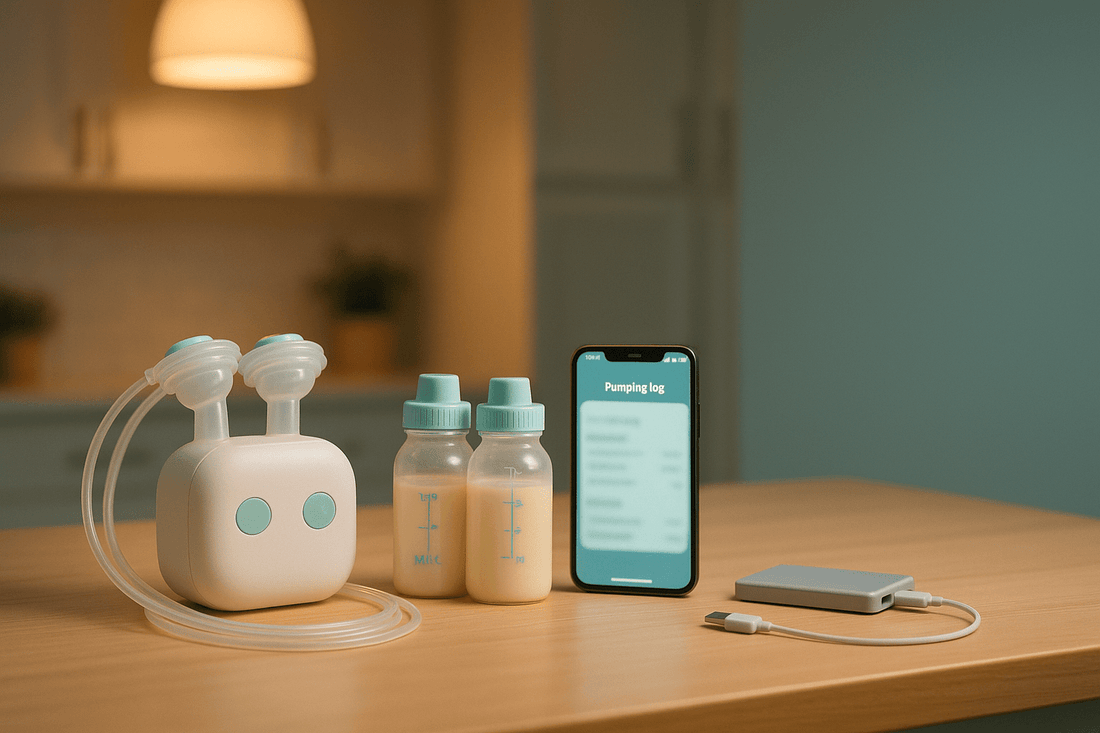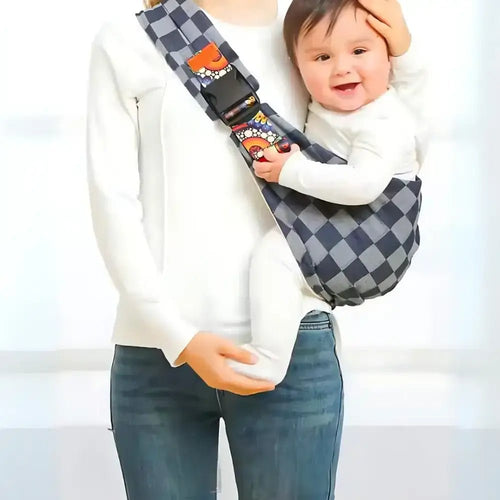
Lansinoh Breast Pumps — Complete Buyer’s Guide
Lansinoh Breast Pumps: Smartpump 3.0, Signature Pro & Wearables — Complete Buyer’s Guide
Shopping Lansinoh? This guide compares Smartpump 3.0 (Bluetooth + rechargeable), Signature Pro (3 pumping styles, 8 levels, closed system), and wearable options for hands-free sessions. You’ll find spec-based comparisons, step-by-step setup, ComfortFit flange sizing, cleaning and milk-storage basics, travel and workday checklists, sample pumping plans, and advanced troubleshooting to help you pump more comfortably and efficiently.
Lineup at a glance (comparison)
| Model | Highlights | Best for |
|---|---|---|
| Signature Pro (double electric) | 3 pumping styles, 8 suction levels, closed system, LCD; can run on 6×AA or car adapter in addition to AC | Budget-friendly reliability, simple controls, flexible power |
| Smartpump 3.0 (double electric) | Bluetooth to Lansinoh app, rechargeable battery, 3 styles, 8 levels; session logging & reminders | Desk or travel pumping with app tracking and fewer cords |
| Wearable / DiscreetDuo | In-bra, cord-free convenience; 2-Phase, 3 styles, 8 levels; discreet and mobile | Hands-free mobility and multitasking |
Note: Exact specs, bundles, and suction ranges can vary by region and retailer. Always check your product’s manual.
Signature Pro: simple, reliable power
The Signature Pro remains a popular workhorse. Its 3 styles and 8 suction levels let you dial comfort quickly, and a closed system helps keep milk out of tubing for easier cleanup. The LCD is readable in low light, while the optional 6×AA battery pack or car adapter adds backup power on commutes and road trips. If you want predictable cycles with minimal complexity, this model delivers.
Smartpump 3.0: app-connected & rechargeable
Smartpump 3.0 pairs via Bluetooth to the Lansinoh app so you can log sessions automatically, set reminders, and view helpful stats (duration, side, average sessions/day). A built-in rechargeable battery reduces outlet hunting. With 3 pumping styles and 8 levels, it’s easy to start gently, then increase to the lowest effective level that maintains flow. App notes can help you discover patterns—like which level/time of day gives better output—so you can plan your schedule around what actually works.
Wearables: hands-free mobility
Lansinoh wearable options tuck into your bra for low-profile, hands-free sessions. They use a 2-Phase approach (fast “let-down” → slower “expression”) with 8 levels and multiple styles. Wearables shine when you need to move—school drop-offs, housework, catching emails—though traditional bottle-outside systems may still feel strongest for some users. Many parents keep a wearable for mobility plus a plug-in double electric for power sessions.
ComfortFit flange sizes & fit (mm)
Fit is output. ComfortFit flanges come in popular sizes like 21, 25, 28, 30.5, and 36 mm. Measure your nipple diameter in millimeters (exclude the areola) and choose the closest size for each breast (they can differ). Signs you may need a change: rubbing, blanching/whitening, the nipple pulling too deep into the tunnel, or lingering soreness. If unsure, test one size up/down or consult an IBCLC.
Setup & first session (step-by-step)
- Assemble & seal valves/diaphragms snugly to preserve the closed system; check tubing fits tightly.
- Align & support the nipple centrally; the flange should sit flush without pinching.
- Start gently in Stimulation; once milk flows, switch to Expression and adjust one step at a time.
- Hands-on help: Light breast compressions can improve emptying and comfort.
- Typical duration: Double sessions ~15–20 minutes; stop when comfortably empty.
- Between sessions (comfort): For surface tenderness between feeds or pumps, some parents use silver nursing cups as a soothing, reusable option—remove before nursing or pumping.
Cleaning & safe milk storage
- After each session: Wash milk-contact parts with hot, soapy water; rinse and air-dry. Sanitize per your manual.
- Fresh milk: Room ≤77°F (25°C) up to 4 hours · Refrigerator up to 4 days · Freezer ~6 months best (≤12 months acceptable).
- Thawed milk: If thawed in the fridge, use within 24 hours; don’t refreeze; avoid microwaving.
- On the go: With frozen ice packs in an insulated cooler, milk typically stays cold for up to ~24 hours; transfer at destination.
Portability, power & travel tips
- Signature Pro power: AC adapter + AA battery pack (great backup) + optional car adapter.
- Smartpump 3.0: Rechargeable battery for cord-light days; keep a compact power bank as a safety net.
- Wearables: Truly mobile—pack spare valves and a soft pouch to protect cups in your bag.
- TSA & flights: Pumps are allowed in carry-ons; frozen ice packs and breast milk are typically permitted—check current airline/TSA guidance before flying.
Parts care & replacement cadence
Output often rebounds when you refresh wear items. A common (adjustable) cadence:
- Duckbill valves/membranes: ~4–8 weeks with daily use; replace sooner if you see gaping or tiny tears.
- Tubing: Replace if it won’t dry, discolors, or fits loosely at the barbs.
- Flanges/shields: Swap if cracked/warped or if comfort declines despite correct sizing.
- Backflow parts: Replace after drops or if seals loosen.
Noise, comfort & privacy
- Reduce resonance: Place the pump on a mouse pad or soft cloth.
- Protect time: Calendar blocks and a simple “brief meeting” door sign cut interruptions.
- Comfort stack: Warm compress 2–3 minutes pre-pumping, elbow support pillows, water + snack within reach. For nipple/areola tenderness between sessions, many parents find silver nursing cups helpful (remove before use with pump or baby).
Sample pumping plans (return-to-work, EP, combo)
Return-to-work (office)
- Morning nurse/pump at home → mid-morning pump (~10–15 min) → mid-afternoon pump → nurse at pickup/evening.
- Keep a consistent time window; use your app to track output and adjust meeting times.
Exclusive pumping (EP)
- Early weeks: 7–8 sessions/day (~2.5–3 h apart), then consolidate gradually as supply stabilizes.
- Aim for 120–150 minutes total daily pumping time; personalize with your clinician/IBCLC.
Combo feeding
- Replace one feed with a bottle daily while adding a short pump at a consistent time to protect supply.
- Use paced bottle feeding to support latch and avoid over-feeding.
Medical note: These are general starting points; personalize with your baby’s clinician or an IBCLC.
Bottle & bag compatibility

Lansinoh pumps typically pair with Lansinoh bottles and storage bags. If you prefer different bottle shapes, look for narrow-to-wide neck adapters or pump-to-bag adapters that fit your system. Always verify fit and leak performance before relying on new combinations outside the home.
Insurance, FSA/HSA & warranty
In many regions, breast pumps may be partially or fully covered via insurance or DME suppliers, and accessories can be FSA/HSA eligible. Keep your receipt, register your pump for warranty, and confirm which parts are covered as “consumables.” If you’re outside the U.S., check local programs or retailer policies for eligible benefits and returns.
Troubleshooting (advanced)
- Weak suction: Reseat valves/diaphragms; check for micro-tears; push tubing fully onto barbs; ensure connectors are fully closed.
- Milk in tubing: Replace affected tubing; inspect backflow parts; keep cups more level to reduce slosh-back.
- One side lagging: Try a different flange size on that side, recenter the nipple, add gentle compressions.
- Nipple soreness: Drop one level; try a brief Stimulation burst mid-session; reassess flange size; shorten sessions and add one more daily session. Between sessions, consider soothing with silver nursing cups.
- Output dip after weeks: Refresh valves/membranes, hydrate, and add a consistent morning pump when possible.
FAQ
Is Signature Pro a closed-system pump?
Yes—when assembled with the proper parts, the hygienic barrier helps keep milk out of tubing and the motor path.
How many suction levels do Lansinoh electrics offer?
Most double electrics provide 8 levels with multiple pumping styles so you can fine-tune comfort.
What does the Smartpump 3.0 app add?
Bluetooth logging, reminders, and basic session stats to help you plan your day and see patterns over time.
Are wearables as strong as plug-in pumps?
Wearables prioritize mobility and discretion; many parents keep both a wearable and a plugged-in double electric for power sessions.
Can I travel with my pump?
Yes. Pumps are allowed in carry-on bags. Bring a small cooler with frozen ice packs for milk and confirm current airline/TSA rules before flying.


